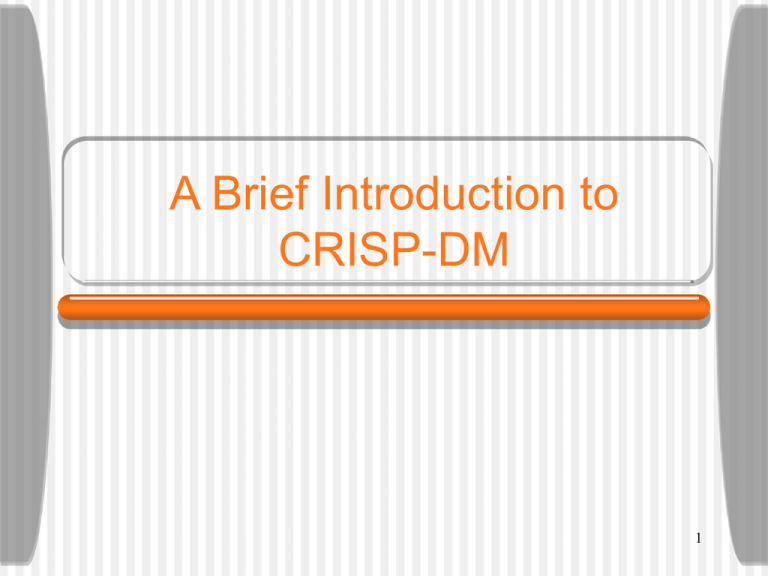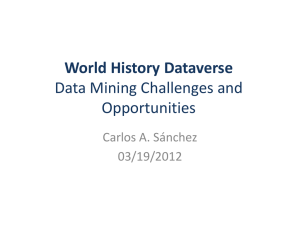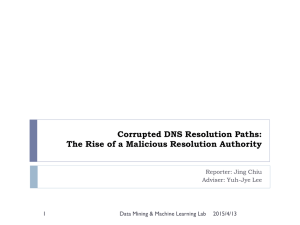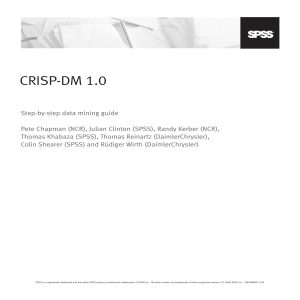CRISP-DM - BYU Data Mining Lab
advertisement

A Brief Introduction to CRISP-DM 1 Background • CRISP-DM: Cross-Industry Standard Process for Data Mining • Consortium effort involving: NCR Systems Engineering Copenhagen DaimlerChrysler AG SPSS Inc. OHRA Verzekeringen en Bank Groep B.V • History: Version 1.0 released in 1999 Version 2.0 being developed See www.crisp-dm.org for details Visual Overview CRISP-DM Phases • Business Understanding Initial phase Focuses on: • Understanding the project objectives and requirements from a business perspective • Converting this knowledge into a data mining problem definition, and a preliminary plan designed to achieve the objectives • Data Understanding Starts with an initial data collection Proceeds with activities aimed at: • • • • Getting familiar with the data Identifying data quality problems Discovering first insights into the data Detecting interesting subsets to form hypotheses for hidden information CRISP-DM Phases • Data Preparation Covers all activities to construct the final dataset (data that will be fed into the modeling tool(s)) from the initial raw data Data preparation tasks are likely to be performed multiple times, and not in any prescribed order Tasks include table, record, and attribute selection, as well as transformation and cleaning of data for modeling tools • Modeling Various modeling techniques are selected and applied, and their parameters are calibrated to optimal values Typically, there are several techniques for the same data mining problem type Some techniques have specific requirements on the form of data, therefore, stepping back to the data preparation phase is often needed CRISP-DM Phases • Evaluation At this stage, a model (or models) that appears to have high quality, from a data analysis perspective, has been built Before proceeding to final deployment of the model, it is important to more thoroughly evaluate the model, and review the steps executed to construct the model, to be certain it properly achieves the business objectives A key objective is to determine if there is some important business issue that has not been sufficiently considered At the end of this phase, a decision on the use of the data mining results should be reached CRISP-DM Phases • Deployment Creation of the model is generally not the end of the project Even if the purpose of the model is to increase knowledge of the data, the knowledge gained will need to be organized and presented in a way that the customer can use it Depending on the requirements, the deployment phase can be as simple as generating a report or as complex as implementing a repeatable data mining process In many cases it will be the customer, not the data analyst, who will carry out the deployment steps However, even if the analyst will not carry out the deployment effort it is important for the customer to understand up front what actions will need to be carried out in order to actually make use of the created models The Missing Link Closing the Loop Changes in data Changes in environment Monitoring How do I know my model remains valid and applicable? When should I update my model(s)? How do I update my model(s)? More on Data Mining • KDnuggets News, software, jobs, courses, etc. www.KDnuggets.com • ACM SIGKDD Data mining association www.acm.org/sigkdd











